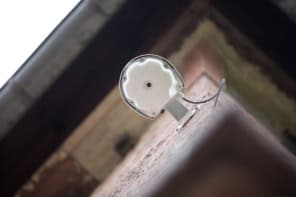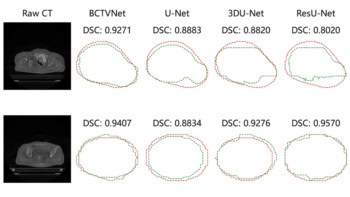Learn about the Large Hadron Collider, its detectors and the man who made it all happen

The starship of zeptospace
The SI prefix “zepto” is rarely used. Few things in the human experience, it seems, are small enough to be measured in terms of 10–21. But as Gian Francesco Giudice explains in A Zeptospace Odyssey: A Journey into the Physics of the LHC, this oddity may be due for a boom, thanks to CERN’s Large Hadron Collider (LHC). The LHC is the first instrument capable of exploring matter on scales of less than 100 zeptometres, a strange regime where phenomena like supersymmetry and extra dimensions may await discovery. Giudice’s book places this milestone into context, describing the construction of both the Standard Model of particle physics and the instruments designed to test it. The story begins with Maxwell’s theory of electromagnetism and passes rapidly through relativity, quantum chromodynamics and cosmology, finishing with a brief discussion of dark matter, dark energy and the multiverse (see p40, print edition only). It is a familiar narrative, but in this telling it is also engaging and frequently witty, speckled with original analogies and pithy quotations from physicists and cultural figures alike. Better still, it comes straight from the horse’s mouth: Giudice is a particle physicist at CERN, and much of the book is based on public lectures and seminars he has given “out of the desire to impart…some of the awe and excitement I personally feel at being part of this historic project”. The result is an excellent introduction to the LHC, enlivened with a few amusing detours – including the revelation that the LHC would cost about the same, kilo for kilo, if it were made of premium Swiss chocolate. Tempting, but we prefer the real thing.
• 2010 Oxford University Press £25.00/$45.00 hb 256pp
Better than magic
“Using magic in a physics laboratory is usually considered a poor choice, what with the rabbit fur and dove feathers getting into everything.” This practical attitude is typical of The Quantum Frontier, which focuses less on the “why” of particle accelerators like the LHC, and more on the “how”. After a quick discussion of the Standard Model and its possible extensions, author Don Lincoln offers an in-depth but mostly non-technical look at the LHC’s innards. His main focus is on the collider’s detectors, and he describes the basic workings of the four main ones (CMS, ATLAS, LHCb and ALICE) in some detail, while two smaller detector experiments (TOTEM and LHCf, designed to study proton diffraction and cosmic rays, respectively) receive a more cursory treatment. The result is a useful experimental companion to the many theory-oriented books on particle physics. It finishes with a short but interesting discussion of what might come after the LHC – marred only slightly by the fact that Lincoln, a scientist at CERN’s US rival Fermilab, clearly has a vested interest in ensuring that any successor facility is built close to home.
• 2009 Johns Hopkins University Press £13.00/$25.00 hb 192pp
In the CERN hot seat
Being a CERN director-general is not simply a case of being an expert in particle physics and accelerator design, as Herwig Schopper describes in The Lord of the Collider Rings at CERN: 1980–2000 (dreadful pun most definitely intended). As lab boss for most of the 1980s, Schopper also needed to handle billion-dollar budgets, manage rival teams of ambitious researchers, and deal with politicians wincing at the cost of the Large Electron Positron collider – the machine that was very much Schopper’s baby. Add in the challenge of digging a 27 km long tunnel under the Jura Mountains to the need to calm local residents wary of what was mushrooming beneath their homes and you can see why being CERN boss is no ordinary job. Particularly amusing are Schopper’s descriptions of official visits from the likes of former French President François Mitterand, who had to be chauffeured into CERN in Schopper’s old Peugeot 600 because the car the director-general had obtained – a Mercedes – was German. A clunky style and the odd typo aside, the book will be essential material for professional historians looking back on CERN’s golden years.
• 2009 Springer £36.99 hb 211pp



